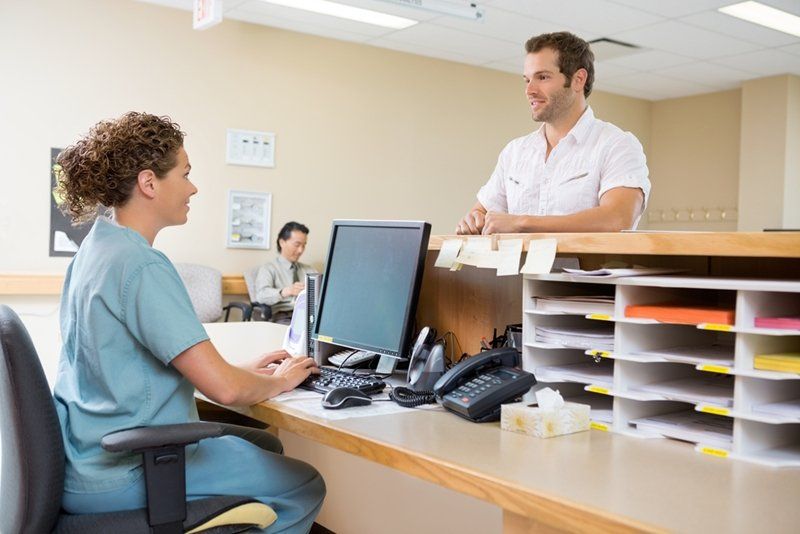Global healthcare RCM market poised for significant growth
April 16, 2018
Tools for proper oversight of the healthcare revenue cycle and better accounting across the broad spectrum of a medical organization’s financial matters have established themselves, in recent months, as utterly invaluable to healthcare administrative personnel.
In a sector such as healthcare, change sometimes occurs at breakneck speed, and countless outside factors have considerable impact on the day-to-day execution of essential tasks. As a result, it can be undeniably beneficial and productive to embrace aspects of the field that display sure signs of stability. Tools for proper oversight of the healthcare revenue cycle and better accounting across the broad spectrum of a medical organization's financial matters have established themselves, in recent months, as utterly invaluable to healthcare administrative personnel.
"Healthcare administrators depend on efficient tools that can provide proper oversight of their revenue cycles."
A new report by Future Market Insights provided considerable insight into the positive development of the healthcare RCM software market. Administrators of hospital systems, clinics and other medical practices have embraced these solutions in significant numbers, driving growth, and those that haven't would serve themselves greatly by doing so soon.
Rapid growth expected through 2022
FMI predicted in its report that the global market for healthcare revenue cycle management software will expand at a compounded annual growth rate of 6.9 percent
between 2017 and 2022. This increase should equate to $43.3 billion in revenue. Also, software solutions dedicated to managing medical billing and payment tasks will grow at an impressive CAGR of their own – 8.2 percent during the same forecast period – but should bring in less revenue, of about $5.84 billion.
Support services are expected to drive a great deal of this growth. An expanding share of healthcare providers are finding their internal staff overwhelmed by the sheer volume of claims and transactions that must be processed. Particularly in situations where medical facilities still rely on legacy software or hardware – or wish to upgrade their tools but experience delays, budget shortfalls and other roadblocks – care providers will likely take all the help they can get from third parties.
All told, FMI projected that hospitals will account for the biggest share of healthcare RCM software adoption through the aforementioned forecast period. Laboratories constituted the second-biggest adopters for these solutions, followed by clinics.

Healthcare RCM software solutions will remain a vital tool for care providers through the foreseeable future.
Cloud deployment will figure prominently in healthcare RCM market
In 2017 alone, healthcare RCM solutions based in the cloud accounted for revenues of approximately $27 billion. Given the manner in which cloud technologies have permeated most prominent industries throughout the global economy, their increased presence in healthcare should be little surprise. Coherent Market Insight noted that organizational advantages, data evaluation and accessibility
are some of the prominent factors driving use of the cloud for RCM, billing, claims processing and other tangential administrative processes care providers must regularly handle.
Factors to keep an eye on
The CMI report pointed out that the simple fact of increasing hospitalization totals around the world – especially in fast-growing nations like India and China – will go a long way toward driving uses of agile healthcare RCM solutions. Additionally, as people are living longer and the senior-citizen population rises in the U.S. and many other countries, the need for care among these individuals, as well as the many products and services tangential to such care, will only rise over the next few decades.
In light of trends like this, which should increase the workload of all staff within medical facilities – from nursing to administration – it's critical for personnel on the back end of such operations to utilize every tool at their disposal to increase efficiency. Healthcare RCM solutions that provide automated data entry, consolidated task management, a wide variety of payment options for patients and opportunities for better communication can serve this purpose with remarkable efficacy.

In 2016, healthcare vendors need the most efficient claims processing systems out there. By now, flexible, web-focused methods for important claims tasks are clearly the industry's path forward, and will play a major role in bridging the gap between patients and providers. A fast, digital claims method makes a direct link from implementation to delivery for workers' compensation and motor vehicle billing alike. Now is the time to invest in better revenue cycle management, with a focus on detail-driven, well-facilitated collection that breaks down barriers. Despite the growing pains involved with adopting any new technology, there are a couple of areas where smarter systems have already improved claims processing online. Direct accessibility With each new convenience, the future of healthcare looks more integrated. Data analytics harvests insights from seemingly unrelated details for fuller results. To make this innovation worthwhile, however, there needs to be a distinct pipeline between entities. "Data analytics harvests insight from seemingly unrelated details." Online healthcare portals are already addressing this need, providing direct communication through smart devices like phones and tablets. By bringing necessary information together in a simple, accessible source, these solutions set the stage for clean claims assembly. Shorter cycles Proper collection from the outset can reduce the amount of work hospitals have to do later if the claim is resubmitted, according to Gary Marlow, Vice President of Finance at Beverly Hospital and Addison Gilbert Hospital. "From a revenue cycle perspective, getting the most accurate information up front starts with patient scheduling and patient registration," Marlow told RevCycleIntelligence in 2015. "That provides the groundwork by which claims can be billed and collected in the most efficient and effective manner possible." The way information enters the claims process can impact how it gets managed. If technology, like artificial intelligence, is present at the beginning and guides the claims throughout, there's a consistent system handling the information the process to meet best practices. PROMEDICAL's benefits With our secure, efficient and comprehensive system, PROMEDICAL is staying ahead of the game. We're doing that by developing the following features: Communication: Users can choose from multiple languages with our online offerings. This allows you to customize your system to better reach patient populations and keep claims moving faster. Customization: If our proprietary options aren't currently meeting your needs, we can change them to do so based on feedback. Adapt to state fee schedules or language demands on a case by case basis. Encryption: A must for secure file exchange, PROMEDICAL ensures a secure file transfer process. Our process protects backup data equally strong as primary data, for efficient security across the board. Planning: Organizations also benefit when a set deadline is involved, putting clear limits on when submissions are set for review. Processing records requests within a preordained period of days helps managers know what to expect, and regular reports set up clear overviews of important statistics. Contact PROMEDICAL today to learn more about our healthcare revenue cycle solutions.

According to Pew Research, 15 percent of U.S. adults have used ridesharing services . Where does insurance enter the picture? Uber, Lyft and other ridesharing apps throw a proverbial wrench in hospitals' revenue cycle management operations. Billing is already a major pain point in hospitals – Black Book Research noted most facilities are outsourcing their RCM because in-house teams lack the resources to efficiently handle motor vehicle reimbursement. Ridesharing will only exacerbate the issue. For example, if a rider gets injured and has to go to the hospital, from which institution does the hospital receive reimbursement : The driver's insurance? The passenger's? Uber's? As Uber and Lyft are the most popular ridesharing apps, we'll focus on how these companies handle driver insurance. How do Lyft and Uber insure drivers? Lyft has three types of coverage within its insurance policies: Contingent Liability activates when a driver logs into the app and requests to accept rides – a state Lyft designates as "Driver mode." This coverage provides up to $100,000 per accident for bodily injury. Contingent Comprehensive and Collision kicks in when a driver has picked up a passenger. This coverage applies when a non-collision event damages the driver's vehicle. Uninsured/Underinsured Motorist applies when an at-fault driver who is uninsured or underinsured causes bodily injury to himself, his passengers or any third parties. The coverage provides $1 million per incident, and includes no deductible. For example, if a driver is injured in an accident at a time when he is not working for Lyft, his personal insurance will cover him (assuming he lives in a no-fault state, but that's another issue). However, when the driver activates Driver mode, Lyft's Contingent Liability will protect him even if he hasn't accepted a ride from a passenger. What if the driver's at fault? According to Rideshare Dashboard, Lyft's commercial insurance will cover all damages to third parties and the passenger, but the driver will have to cover his own medical expenses. That's when state laws dictate payment. In Massachusetts, for example, which also happens to be a no-fault state and requires all motor vehicle owners to possess auto insurance, the rider's personal auto insurance will cover the medical bills. Uber's insurance system is somewhat similar to Lyft's but possesses a few minor differences. For example, when an Uber driver is transporting a passenger, and another motorist causes an accident that results in bodily injury to the driver, the passenger and anyone else involved, Uber's UM/UMI will cover bodily injury of anyone in the rideshare vehicle.

With new, transformative technological advancements on the rise, it's no surprise that nearly every industry is feeling the impact of the digital age. From a healthcare provider's perspective, new resources can be used to revamp the current revenue cycle management processes you have in place. To reap the benefits of an optimized approach, you must be willing to take advantage of such emerging technological tools and resources, as stated by Chad Sandefur, Director and Healthcare Analyst at AArete. "Generally speaking, in order to strengthen the revenue cycle management, embracing technology within the revenue cycle is key," Sandefur shared with RevCycleIntelligence.com. "Having the platforms to seamlessly facilitate provider-payer interactions are really integral. In many cases, it's mostly about bad debt avoidance. With that in mind, there are a few specific points." Let's take a closer look at the benefits of utilizing technology, plus some of the emerging resources your facility can use to revamp your current RCM processes: The benefits of an optimized approach By paying attention to the new digital advancements that can benefit your RCM, you can ultimately impact the workflow of your staff members while better streamlining services for consumers. Here are some of the advantages of an optimized approach: Reduced chance for human error – Human error is inevitable when handling large amounts of data. Management software can be used to keep track of patient data input and maintenance. Better opportunity for precise, automated data entry – Between appointment scheduling, data input and claims submission, employees have a lot of duties. Automated software can take care of some of these responsibilities, allowing staff members to better focus on a single task at a time. I ncreased cash flow – Claims management technology can expedite claims quickly and produce clean, accurate claims, ultimately increasing cash flow , as stated by Becker's Hospital Review. Optimizing your RCM approach can lead directly to a significant return on investment and improve the overall reputation of your billing department.
